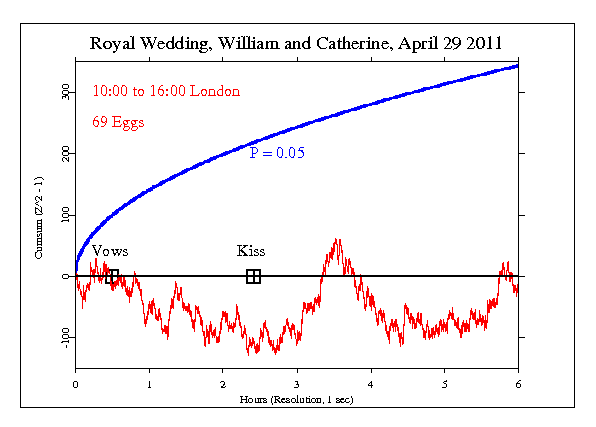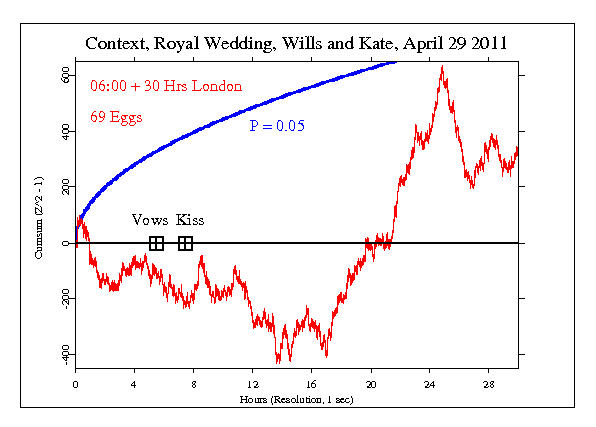|
Wedding of Prince William, Duke of Cambridge, and Catherine
Middleton
From Wikipedia, the free encyclopedia
On Friday, 29 April 2011, Prince William, Duke of Cambridge
married Catherine Middleton at Westminster Abbey, London at
11:00 am BST (UTC+1). William, who is second in the line of
succession to Elizabeth II, first met Middleton in 2001,
while both were students at the University of St Andrews.
Their engagement, which began on 20 October 2010, was
announced on 16 November 2010.
The build up to the wedding and the occasion itself
attracted much media attention, with the service broadcast
live around the world, and with it being compared and
contrasted in many ways to the last high profile British
royal wedding in the United Kingdom, the 1981 marriage of
William's parents, Prince Charles and Lady Diana Spencer. It
was watched by a global television audience of over 2
billion. Much of the attention focussed on Middleton's
status as a commoner (ie. not of royal blood or a part of
the aristocracy) and such marrying into royalty. Hours
before the service, William was granted the titles of the
Duke of Cambridge, Earl of Strathearn, and Baron
Carrickfergus by the Queen.
As William was not the immediate heir to the throne, the
wedding was not a full state occasion, with many details
left to the couple themselves to decide, such as much of the
the guest list of about 1,900. It was, however, a public
holiday in Britain and featured many ceremonial aspects,
including use of the state carriages and roles for the Foot
Guards and Household Cavalry. It was attended by most of the
Royal Family, as well as many foreign royals, diplomats, and
the couple's chosen personal guests.
Middleton wore a white dress with a 270 centimetres (110 in)
train, by English designer Sarah Burton, as well as a tiara
lent to her by the Queen. William, commissioned as a Royal
Navy Lieutenant, Army Captain and Air Force Flight
Lieutenant, chose instead to wear the uniform of his
honorary rank of Colonel of the Regiment for the Irish
Guards. William's best man was his brother, Prince Harry,
while the bride's sister, Pippa, acted as her maid of
honour. The Dean of Westminster officiated most of the
service, with the Archbishop of Canterbury conducting the
marriage ceremony itself and the Bishop of London giving the
sermon. A reading was also given by the bride's brother,
James. After the ceremony, the newly married couple
travelled in procession to Buckingham Palace for the
traditional appearance on the balcony and a fly past before
crowds assembled in The Mall.
The GCP event was set to begin at 11:00 and continue for 6
hours. The wedding vows were taken about half an hour later,
and the ceremony was about an hour. The wedding party went
to Buckingham palace, where the newly wed couple appeared at
about 1:20 to 1:30 on the balcony to "seal" the marriage
with a kiss. The result is Chisquare 21578.136
on 21600 df, for p = 0.541 and Z = -0.102.

I had a useful exchange with Michael Duggan on how to more completely
codify the specification of "global events", in which he
suggested that categories of events should have
set durations for all cases.
He gave some examples, like +6 hours for earthquakes
and other natural disasters, +4 for terrorist attacks, +2 for speeches
and important addresses, etc.
I challenged him to provide a time frame for the Royal
Wedding, which he answered with the surprising suggestion of 30 hours. I
had already done the formal analysis, but present here the
result for Michael's prediction as kind of contextual
background -- and an object lesson in the challenges of
setting fixed time periods to accommodate often unique global
events.
It starts 5 hours earlier and continues for 19
hours after the formal period (5 to 11 on the X-axis here).
It is, as noted in the caveat at the bottom of the page, not
appropriate to interpret single event outcomes, but the only
notable aspect here is the lengthy period of positive deviation
in the latter half of the graph, which starts some 12 hours
after the wedding, long after the peak of global attention.

It is important to keep in mind that we have only a tiny
statistical effect, so that it is always hard to distinguish
signal from noise. This means that every "success" might be
largely driven by chance, and every "null" might include a real
signal overwhelmed by noise. In the long run, a real effect can
be identified only by patiently accumulating replications of
similar analyses.
|